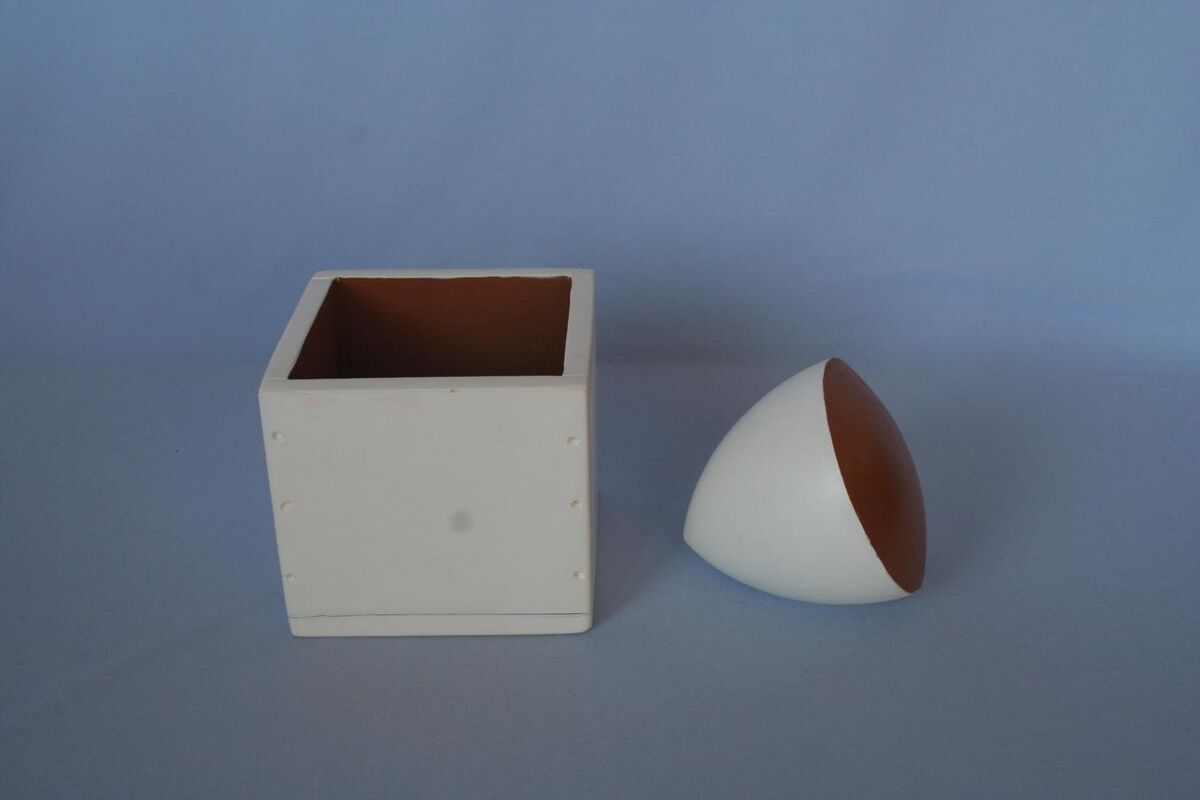Surface of constant width
| Unsolved problem in mathematics: What is the minimum volume among all shapes of the same constant width? (more unsolved problems in mathematics)
|
In geometry, a surface of constant width is a convex form whose width, measured by the distance between two opposite parallel planes touching its boundary, is the same regardless of the direction of those two parallel planes. One defines the width of the surface in a given direction to be the perpendicular distance between the parallels perpendicular to that direction. Thus, a surface of constant width is the three-dimensional analogue of a curve of constant width, a two-dimensional shape with a constant distance between pairs of parallel tangent lines.
Definition
More generally, any compact convex body D has one pair of parallel supporting planes in a given direction. A supporting plane is a plane that intersects the boundary of D but not the interior of D. One defines the width of the body as before. If the width of D is the same in all directions, then one says that the body is of constant width and calls its boundary a surface of constant width, and the body itself is referred to as a spheroform.
Examples
A sphere, a surface of constant radius and thus diameter, is a surface of constant width.
Contrary to common belief the Reuleaux tetrahedron is not a surface of constant width. However, there are two different ways of smoothing subsets of the edges of the Reuleaux tetrahedron to form Meissner tetrahedra, surfaces of constant width. These shapes were conjectured by (Bonnesen Fenchel) to have the minimum volume among all shapes with the same constant width, but this conjecture remains unsolved.
Among all surfaces of revolution with the same constant width, the one with minimum volume is the shape swept out by a Reuleaux triangle rotating about one of its axes of symmetry,[1] while the one with maximum volume is the sphere.
Properties
Every parallel projection of a surface of constant width is a curve of constant width. By Barbier's theorem, the perimeter of this projection is π times the width, regardless of the direction of projection. It follows that every surface of constant width is also a surface of constant girth, where the girth of a shape is the perimeter of one of its parallel projections. Conversely, Hermann Minkowski proved that every surface of constant girth is also a surface of constant width.[2]
The shapes whose parallel projections have constant area (rather than constant perimeter) are called bodies of constant brightness.
References
Notes
Sources
- Theorie der konvexen Körper, Springer-Verlag, 1934, pp. 127–139.
- Campi, Stefano; Colesanti, Andrea; Gronchi, Paolo (1996), "Minimum problems for volumes of convex bodies", Partial Differential Equations and Applications: Collected Papers in Honor of Carlo Pucci, Lecture Notes in Pure and Applied Mathematics, no. 177, Marcel Dekker, pp. 43–55.
- Geometry and the Imagination (2nd ed.), Chelsea, 1952, pp. 216–217, ISBN 978-0-8284-1087-8, https://books.google.com/books?id=7WY5AAAAQBAJ&pg=PA216.
Further reading
- Guilfoyle, Brendan; Klingenberg, Wilhelm (2009), "On C2-smooth surfaces of constant width", Tbilisi Math. J. 2: 1–17, Bibcode: 2007arXiv0704.3248G
- "Drei Gipsmodelle von Flächen konstanter Breite", Z. Math. Phys. 60: 92–94, 1912.
External links
- Spheroforms
- T. Lachand-Robert & É. Oudet, "Bodies of constant width in arbitrary dimension"
- How Round is Your Circle? Solids of constant width
- Mould, Steve, "Shapes and Solids of Constant Width", Numberphile (Brady Haran), http://www.numberphile.com/videos/shapes_constant.html
 |


